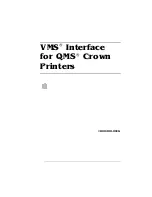
Windows Installer Editor Reference
59
Chapter 3
Working With Wise Installation Files
This chapter includes the following topics:
z
Before You Create an Installation
on page 59
z
File Types
on page 60
z
Project Files and Database Files
on page 61
z
Target Platforms: 32-bit and 64-bit
on page 62
z
Starting a New Installation
(page 70)
z
Options for New Installations
on page 73
z
Opening an Installation Package
on page 74
z
Comparing Windows Installer Files
on page 75
z
Saving an Installation as XML
on page 77
z
Working With Installations in the Software Manager Database
on page 77
z
Compiling An Installation
on page 78
z
Testing and Running An Installation
on page 80
Before You Create an Installation
To avoid interruptions during installation development, gather the following information
before you begin creating an installation in Windows Installer Editor.
z
All the files to install on the destination computer. This includes program files, files
necessary for optional features, related .DLLs, drivers, and other support files.
z
Any third-party installations that the installation will provide. Example: Adobe
Acrobat Reader.
z
Which files and other system changes comprise which features. (In Windows
Installer, a feature is a distinct part of your application’s functionality. Examples: a
spell-checker, a thesaurus, or a collection of clip art.) If the installation will let end
users select optional components, you must organize files into features when you
create the installation.
z
A list of the changes that must be made to system information files (examples: .INI
files, the registry, and so on) for your application to run properly.
z
The application’s system requirements in as much detail as possible. Consider not
only memory and disk requirements, but also the minimum screen depth and
resolution, and the minimum required version of the operating system.
z
Any custom graphics, referred to as billboards, that should be displayed during
installation.
z
Any changes that should be made to the dialog boxes that will be displayed during
installation.
















































